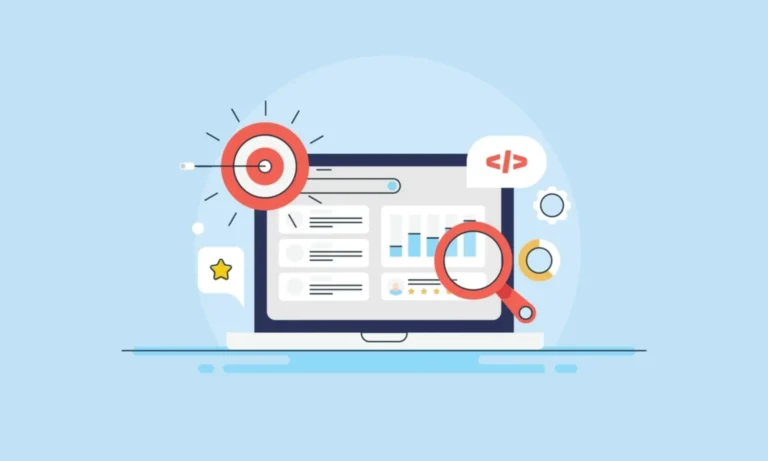How To Do SEO: A Beginner’s Guide to SEO Success

In today’s digital age, SEO (Search Engine Optimization) has become an essential practice for anyone looking to increase their website’s visibility on search engines like Google, Bing, and Yahoo. Whether you’re a blogger, business owner, or marketing professional, understanding SEO can significantly improve your website’s traffic and online presence. This beginner’s guide will walk you through the essential steps for SEO success, from understanding its core principles to implementing key strategies.
What is SEO?
SEO, or Search Engine Optimization, is the process of improving your website to increase its visibility when people search for products, services, or content related to your business on search engines. The better visibility your web pages have in search engine results, the more likely you are to attract attention and convert visitors into customers.
Search engines like Google use algorithms to rank websites based on a variety of factors, including content quality, relevance, user experience, and technical optimization. SEO helps you align your website with these factors, ultimately boosting your ranking.
Why is SEO Important?
- Increased Traffic: Higher rankings in search results lead to more visitors to your website.
- Credibility and Trust: Websites that rank highly are often perceived as more credible and trustworthy.
- Better ROI: SEO is cost-effective when compared to paid ads because once you’re ranked well, the traffic is mostly organic.
- Long-Term Results: Unlike paid advertising, SEO efforts can lead to sustainable long-term results.
SEO Basics: Key Components
1. Keyword Research
Keywords are the terms or phrases that users type into search engines when looking for information. Identifying the right keywords is crucial for SEO success. The goal is to understand what your audience is searching for and target those keywords in your content.
How to do Keyword Research:
- Use tools like Google Keyword Planner, Ubersuggest, or Ahrefs to identify keywords related to your niche.
- Look for keywords with a balance of high search volume and low competition.
- Prioritize long-tail keywords (longer phrases with specific intent) as they often have lower competition and higher conversion potential.
Example: Instead of targeting “SEO” (a broad keyword), you can target “beginner’s guide to SEO” (a more specific long-tail keyword).
2. On-Page SEO
On-page SEO refers to optimizing the content and structure of your website’s pages to improve their search engine rankings.
Key On-Page SEO Elements:
- Title Tags: This is the clickable headline that appears in search results. It should be descriptive and include your target keyword. Example: “Beginner’s Guide to SEO Success – Learn SEO Step-by-Step”
- Meta Descriptions: A short description under the title tag in search results. It should summarize the content and encourage users to click through. Example: “Learn the basics of SEO with this beginner’s guide. Discover keyword research, on-page SEO, and technical tips to boost your rankings.”
- Headers (H1, H2, H3): Organize your content with headers. Your H1 tag should include the main keyword, while H2s and H3s can structure subsections for better readability.
- Content Quality: Your content should be valuable, informative, and provide answers to your audience’s questions. Google favors longer, in-depth articles that provide comprehensive information. Tip: Aim for content that is at least 1,500 words and focuses on user intent.
- Internal Linking: Link to other relevant pages within your website. This helps search engines understand the structure of your website and encourages users to spend more time on your site.
- Image Alt Text: Every image should have descriptive alt text to help search engines understand what the image is about. This is also important for accessibility.
3. Off-Page SEO
Off-page SEO refers to external factors that influence your site’s ranking, primarily backlinks—links from other websites that point to your site.
How to Build Quality Backlinks:
- Guest Blogging: Write guest posts for other websites and include a link back to your own site.
- Content Promotion: Share your content on social media, forums, and online communities to attract attention and links.
- Influencer Outreach: Connect with industry influencers and ask them to share or link to your content if they find it valuable.
- Directory Listings: Submit your website to relevant business directories or industry-specific platforms.
4. Technical SEO
Technical SEO ensures that your website is optimized for crawling and indexing by search engines. It focuses on site architecture, page speed, mobile-friendliness, and more.
Key Technical SEO Elements:
- Mobile Optimization: Ensure your site is mobile-friendly since most searches are done on mobile devices. Use a responsive design. Tip: You can test your site’s mobile-friendliness using Google’s Mobile-Friendly Test Tool.
- Site Speed: A slow website can hurt your rankings. Compress images, enable browser caching, and minimize code to improve loading times. Use tools like Google PageSpeed Insights to identify issues.
- XML Sitemap: Create an XML sitemap and submit it to Google Search Console. This helps search engines discover and index your content more efficiently.
- Robots.txt: This file tells search engines which pages they can and cannot crawl. Ensure your robots.txt file is correctly configured to avoid blocking important pages.
- Secure Website (HTTPS): Security is a ranking factor. Use an SSL certificate to make sure your site is secure.
5. User Experience (UX)
Google values websites that offer a good user experience. This includes easy navigation, clear structure, and providing value to users.
Tips for Improving User Experience:
- Responsive Design: Ensure your site is easy to navigate on all devices.
- Clear Navigation: Use simple, logical navigation menus and internal linking to help users find what they’re looking for.
- Engaging Content: Break up text with images, videos, and bullet points to keep users engaged.
Local SEO
If you’re a local business, optimizing for local SEO is crucial. Local SEO helps businesses rank in search results for location-based queries (e.g., “SEO services near me”).
Steps for Local SEO:
- Google My Business: Create and optimize a Google My Business profile with accurate information.
- Local Keywords: Incorporate location-based keywords in your content (e.g., “SEO services in New York”).
- Customer Reviews: Encourage satisfied customers to leave reviews on Google and other platforms. Positive reviews can boost your local rankings.
Tracking and Measuring SEO Success
SEO is an ongoing process, and it’s important to monitor your efforts to see what’s working and what needs improvement.
Essential SEO Tools:
- Google Analytics: Tracks website traffic, user behavior, and conversions.
- Google Search Console: Monitors website performance, crawl errors, and search traffic.
- Ahrefs / SEMrush: Provides keyword tracking, backlink analysis, and competitor research.
Key Metrics to Monitor:
- Organic Traffic: The number of visitors coming to your site from search engines.
- Keyword Rankings: Monitor how your target keywords rank over time.
- Bounce Rate: The percentage of users who leave your site after viewing only one page. A high bounce rate could indicate poor user experience or irrelevant content.
- Conversion Rate: The percentage of visitors who take a desired action, such as making a purchase or signing up for a newsletter.
Common SEO Mistakes to Avoid
- Keyword Stuffing: Overloading your content with keywords can hurt your rankings. Use keywords naturally.
- Ignoring Mobile Optimization: With mobile-first indexing, Google primarily uses the mobile version of your site for ranking.
- Not Updating Content: Regularly update your content to keep it fresh and relevant.
- Skipping Technical SEO: Don’t neglect technical aspects like site speed, sitemaps, and security.
Conclusion
SEO may seem complex, but by breaking it down into manageable steps, you can make significant improvements in your website’s visibility. Focus on high-quality content, proper keyword research, and a well-optimized website to drive organic traffic and improve your search engine rankings. Remember, SEO is a long-term investment, and consistent effort over time will pay off in the form of increased visibility and traffic.
With this beginner’s guide to SEO success, you’re now equipped to start optimizing your site for search engines. Happy optimizing!





